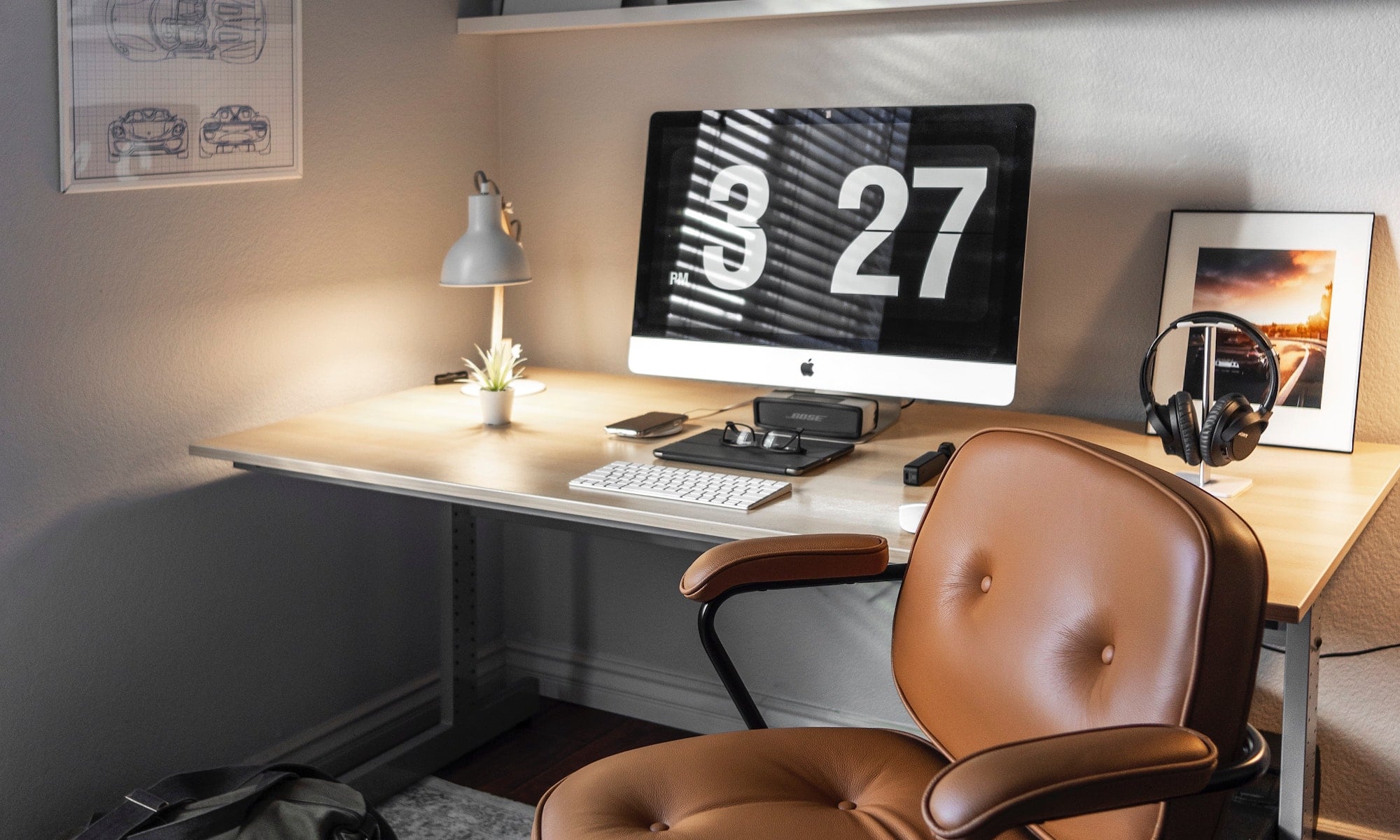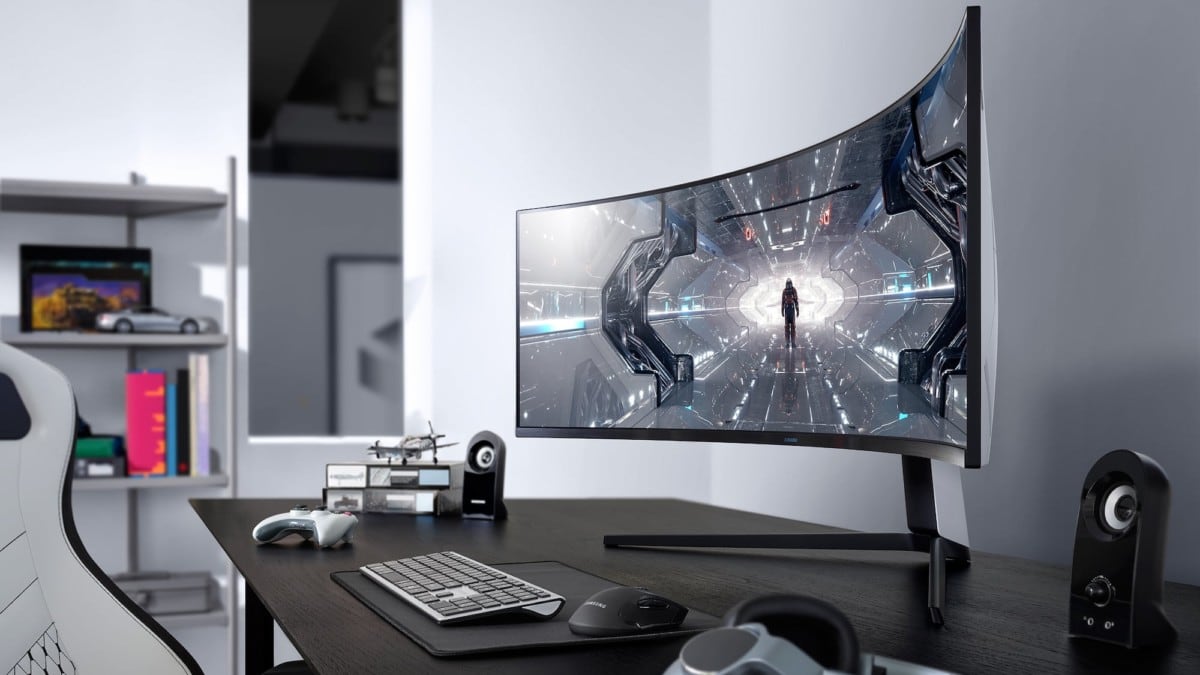As the way we work continues to evolve, the home office has become more than just a place to get work done—it’s now a space that combines comfort, functionality, and advanced technology. Whether you’re a remote worker, a freelancer, or someone who occasionally works from home, setting up a smart home office can boost your productivity, improve your work-life balance, and even help you maintain a healthy and ergonomic workspace.
In this article, we’ll explore how smart technology can transform your home office into an efficient, comfortable, and productive environment. From ergonomic furniture to automation tools, there are numerous ways you can leverage the latest technologies to optimize your home office and create a space that supports your needs.
1. Smart Lighting for Productivity and Comfort

Lighting plays a crucial role in any workspace, and getting it right in your home office is essential for both productivity and overall well-being. Smart lighting allows you to adjust your lighting based on your tasks, mood, and time of day.
Benefits of Smart Lighting:
-
Adjustable Brightness and Color Temperature: With smart bulbs like Philips Hue or LIFX, you can change the brightness and color temperature to match your needs. A cooler, blue-toned light is ideal for tasks that require focus, while warmer lighting can create a relaxing atmosphere when you’re winding down.
-
Scheduling: Set schedules for your lights to turn on or off at specific times, or program them to gradually dim as you approach the end of the workday to signal it’s time to log off.
-
Voice Control: With smart assistants like Amazon Alexa or Google Assistant, you can control your lights with voice commands, ensuring a seamless, hands-free experience.
Using smart lighting in your home office can not only enhance your productivity but also reduce eye strain and improve your overall health, especially during long work hours.
2. Ergonomic and Adjustable Furniture
Your physical comfort is paramount when working from home, and ergonomic furniture is key to ensuring a healthy work environment. Investing in adjustable and smart furniture can greatly improve your posture, reduce strain, and make your workday more comfortable.
Key Smart Furniture Pieces:
-
Standing Desks: A sit-stand desk, like those from Uplift Desk or Fully, allows you to switch between sitting and standing throughout the day, reducing the risks of prolonged sitting. Many standing desks are equipped with memory presets, allowing you to save your preferred sitting and standing heights for convenience.
-
Ergonomic Chairs: An ergonomic chair that supports your lower back, promotes good posture, and allows you to adjust its height and angle can make a huge difference. Brands like Herman Miller and Steelcase offer highly adjustable chairs that help reduce discomfort and long-term health issues.
-
Smart Desks and Tables: Some desks now come with integrated technology, such as USB charging ports, built-in wireless charging pads, and even height adjustments that can be controlled with a button or app. These features add convenience and help keep your workspace tidy.
By incorporating smart furniture into your home office, you can create a more flexible, comfortable, and productive space that reduces the risk of strain and improves your overall health.
3. Smart Devices for Enhanced Productivity
Technology can significantly improve your work productivity, and there are several smart devices designed to streamline your workflow, enhance communication, and keep you organized.
Essential Smart Devices:
-
Smart Speakers: A smart speaker like Amazon Echo or Google Nest can act as your personal assistant. Use it to set reminders, manage your calendar, play focus-enhancing music, or control other smart devices like lights and thermostats—all with just your voice.
-
Smart Plugs: Smart plugs allow you to control electronic devices in your office remotely. For example, you can turn your desk lamp on and off via your smartphone, or schedule devices like your coffee maker to start brewing at a specific time.
-
Wireless Charging Stations: Keep your phone, tablet, and other gadgets charged and organized with a wireless charging station. Many of these stations can charge multiple devices at once, reducing cable clutter and keeping your workspace neat.
-
Smart Thermostat: A smart thermostat like Nest or Ecobee allows you to control your office’s temperature remotely or set schedules. You can ensure that your home office is at the perfect temperature for comfort and productivity without wasting energy.
Integrating these smart devices into your home office will help automate routine tasks, minimize distractions, and create a more efficient workspace.
4. High-Quality Video Conferencing Equipment
As remote work and virtual meetings have become the norm, investing in quality video conferencing equipment is essential for ensuring smooth communication. Whether you’re conducting a Zoom call with colleagues, presenting a webinar, or having a one-on-one meeting, having the right tools makes a huge difference.
Key Video Conferencing Tools:
-
HD Webcam: Invest in an external HD webcam (e.g., Logitech C920 or Razer Kiyo) for better picture quality. Built-in webcams on laptops often don’t provide the clarity needed for professional video calls, especially when you’re in a virtual meeting.
-
Quality Microphone: A good microphone is essential for clear audio during meetings. USB microphones like the Blue Yeti or Audio-Technica AT2020 provide excellent sound quality, ensuring that your voice is heard loud and clear during calls.
-
Ring Light: Proper lighting can make a big difference in how you appear on video calls. A ring light helps eliminate shadows and gives you even, flattering lighting during meetings.
-
Noise-Cancelling Headphones: If you’re in a noisy environment, noise-cancelling headphones (like the Sony WH-1000XM4 or Bose QuietComfort 35 II) can help you focus on conversations without distractions, and they ensure your audio is crystal-clear during calls.
With the right video conferencing equipment, you’ll not only enhance your professional image but also ensure that virtual meetings run smoothly and effectively.
5. Smart Organization and Task Management Tools
Staying organized and keeping track of your tasks are essential to maintaining productivity in a dingdongtogel home office. Fortunately, there are a variety of smart tools that help you manage your time, tasks, and projects with ease.
Must-Have Organizational Tools:
-
Task Management Apps: Apps like Trello, Asana, or Todoist help you stay organized by creating to-do lists, assigning tasks, and setting deadlines. These tools are perfect for managing both personal and work-related tasks, allowing you to prioritize and track progress on projects.
-
Digital Assistants: Google Assistant or Siri can help you manage your schedule, set reminders, and quickly find important information. With voice commands, you can keep your hands free for other tasks.
-
Cloud Storage: Services like Google Drive, Dropbox, and OneDrive allow you to store important documents and files securely in the cloud. With cloud storage, you can access your work from any device, making it easy to collaborate with team members or retrieve documents when you’re on the go.
-
Smart Notebooks: If you prefer taking handwritten notes, consider using a smart notebook like the Rocketbook. These notebooks sync your notes with cloud storage and allow you to digitize your handwritten content, keeping everything organized and easily accessible.
With these organizational tools, you can keep your tasks, projects, and schedule in check, making it easier to stay productive and meet deadlines.
6. High-Speed Internet and Wi-Fi Optimization
Reliable and fast internet is the backbone of any successful home office. Slow connections can lead to frustration, delays, and missed opportunities, especially during important video conferences or when working on large files.
Tips for Enhancing Your Internet Connection:
-
Upgrade Your Router: Consider investing in a high-speed router with Wi-Fi 6 capabilities for faster speeds and better coverage throughout your home office.
-
Wi-Fi Extenders: If you work in a larger space or have dead zones, a Wi-Fi extender or mesh Wi-Fi system (such as Google Nest Wi-Fi or Eero) can boost your signal strength and improve your connection.
-
Wired Ethernet Connection: For the most stable and reliable internet connection, consider using a wired Ethernet connection for tasks that require a high-speed and uninterrupted signal, such as video conferencing or downloading large files.
Ensuring your home office has the fastest and most reliable internet possible is key to maintaining productivity and staying connected with colleagues or clients.
Conclusion: The Future of Home Offices
As remote work continues to rise, home office technology will only become more advanced and integrated into daily workflows. By incorporating smart technology into your home office, you can optimize your work environment, boost productivity, and create a space that supports your needs. Whether you’re looking to enhance comfort, increase efficiency, or stay connected with colleagues, there are numerous smart solutions available that can make a significant difference.
Investing in ergonomic furniture, smart devices, and task management tools will not only help you achieve better work-life balance but also ensure that your home office is a space where you can thrive. As technology continues to evolve, so too will the potential for creating more intelligent, efficient, and comfortable work environments—helping you stay ahead of the curve in today’s ever-changing professional landscape.
Tags: Home office technology
